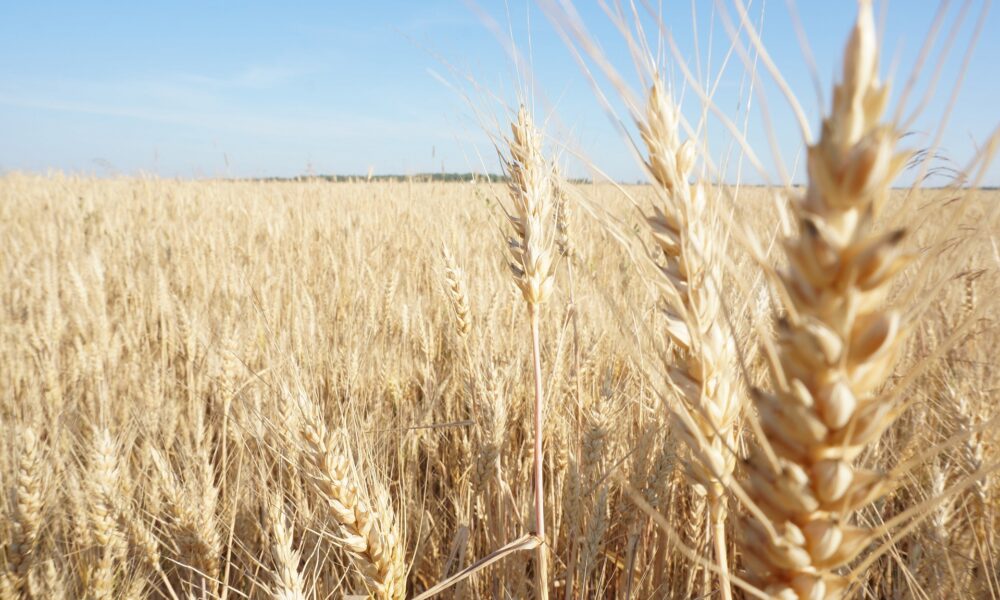Armenia Grain: Low Precipitation Weather Forecast

The most cultivated crop in the Republic of Armenia among the variety of Grain crops is soft Wheat; whereby according to the data of the RA Statistical Committee, the soft Wheat’s cultivation area in 2019 was 59,906 hectares (ha) of land, Barley – 50,948 ha, and spelt – 4,438 ha. Small cultivation areas contributed to production of rye (112 ha) and oats (2,756 ha). Armenia has a population of 3 million and Grain cultivation in the country is mainly concentrated in Shirak, Gegharkunik, Lori, Syunik, Kotayk, and Tavush Marzes.
Planting of the 2023 winter crops, mainly Wheat, to be harvested from July this year, took place between September and November 2022 under drier-than-average weather conditions. In early December, soil moisture levels were below average, particularly in western regions. According to prevailing weather forecasts, there is a high likelihood of below-average cumulative precipitation levels between December 2022 and February 2023 that may hinder crop establishment and development.
Harvesting of the 2022 Grain crops finalized in September 2022, and the output is estimated at 233,000 tons, 5 percent below the five-year average level. The outputs of Wheat and Barley are estimated at 130,000 tons and 70,000 tons, respectively. These volumes are well above the low outputs harvested in 2021 but still slightly below the average levels due to a gradual reduction in planted area, as farmers prefer to cultivate more profitable crops.
More than half of the domestic needs of Grains are covered by imports, mainly from the Russian Federation. Grain import requirements in the 2022/23 marketing year (July/June) are forecast at 398,000 tons, slightly above average. Wheat imports, which account for most of the total Grain purchases, are forecast at an above-average level of 350,000 tons because of the below-average output obtained in 2022.
According to the USDA data, in MY2021/2022, the Armenian Wheat area harvested and production was 60,000 hectares and 0.13 million tons, respectively, with a yield of 2.17 tons/ha. Domestic consumption was 0.5 million tons, with an import volume of 0.35 million tons. For MY2022/2023, the Wheat harvest area and production are estimated at 65,000 hectares and 0.15 million tons, respectively, with a 2.31 tons/ha yield. Domestic consumption is forecast at 0.49 million tons, with an import volume of 0.34 million tons.
For Barley, the harvest area and production are estimated at 55,000 hectares and 95,000 tons, respectively, with a 1.73 tons/ha yield in 2022. Domestic consumption was forecast at 105,000 tons, with an import volume of 10,000 tons. In 2021, the country also imported 10,000 tons of Barley.
Domestic prices of Wheat flour showed an increasing trend from mid-2021 until June 2022. Prices remained overall stable afterward, amid the introduction of a six-month ban on Wheat exports to countries outside the Eurasian Economic Union (EAEU) on 26 May 2022. Last November, prices were about 10 percent above their year-earlier levels due to increases in costs of production and transport.
Armenia imported Wheat and meslin worth $61.9 Million from Russia in 2021. In 2020, Armenia imported Wheat worth $63.8 million, becoming the 91st most significant importer of Wheat in the world. The same year, Wheat was the 8th most imported product in Armenia. Armenia imports Wheat primarily from Russia ($63.8 million).
In 2021, the country exported durum Wheat worth $12.4k (quantity 49.7 tons) to Georgia. In 2020, Armenia exported Wheat worth $34.1k, making it the 81st largest Wheat exporter in the world. The leading destination of Wheat exports from Armenia is the United States ($14.6k), France ($9.44k), Russia ($4.81k), Belgium ($4.64k), and Latvia ($592).
Read also
Wheat in Southern Brazil Impacted by Dry Weather and Frosts
Oilseed Industry. Leaders and Strategies in the Times of a Great Change
Black Sea & Danube Region: Oilseed and Vegoil Markets Within Ongoing Transfor...
Serbia. The drought will cause extremely high losses for farmers this year
2023/24 Safrinha Corn in Brazil 91% Harvested
Write to us
Our manager will contact you soon



